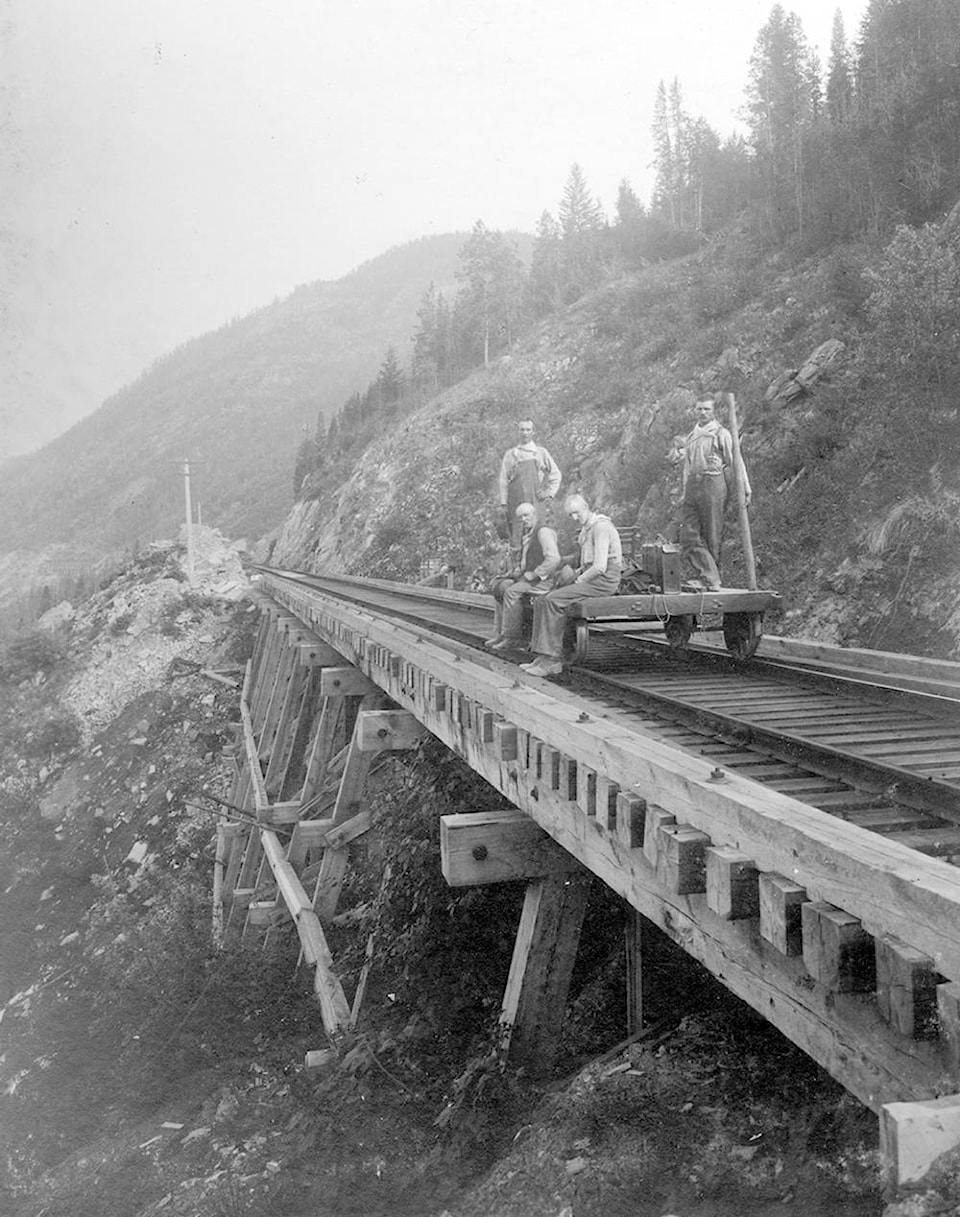In my work on the Columbia & Western interpretive panels I have come to value the amazing photographic record that had long been lost from public view in the files of the CPR Engineering Department.
Joseph William Heckman first worked for the CPR indirectly on the Onderdonk contracts between 1880 and 1884. As Assistant Engineer, he based his work from a comfortable log house near Spences Bridge. During this period he took up photography — his first self-developed negative is of his home, where it was processed. The dwelling later served as railway station house.
In 1888 he entered the employ of the CPR in his old role as Assistant Engineer. For part of the next decade his position was on a renewable contract basis. Photographs that he took of projects that he admired eventually caught the eye of higher management and in April 1898 he was reclassified as company photographer and took on the responsibility of documenting CPR infrastructure for maintenance and insurance purposes.
His first visit to the West Kootenay district was in September 1899, when he took the S.S. Rossland down the Arrow Lakes. His photographs of Robson and West Robson are an invaluable record of the ebullient days when CPR was embarking on its Boundary extension of the Columbia & Western line, which they had recently acquired from Heinze along with his smelter. He travelled by rail from Robson to Trail and Rossland, and by handcar to Nelson.
He returned for more comprehensive coverage in May 1901 and documented the changes.
The Castlegar railway bridge was half completed, the relocated Trail depot was now serving as the West Robson station house, and the Columbia & Western had been extended to Midway.
In an astonishing sequence of 65 photographs Heckman records the numerous wooden trestles that stapled the expensive line to steep mountainsides, crossed rivers and streams, and spanned fearsome gullies. A decade later he returned to document their more permanent replacements with quarried granite and steel.
For his demanding work Heckman travelled in primitive style. He would travel by train to the nearest centre of his operations, taking with him his photographic equipment, glass plates, and processing chemicals, as well as a bench that could be fitted to the front of a handcar, to be provided by the local agent.
Thus he sat in front of the carriage, savouring the view ahead – much like Agnes Macdonald, who spurned the comforts of a well-sprung carriage for a makeshift seat on the engine cowcatcher. Aside from his gear and lunch he kept an umbrella handy at all times.
He was kind to his assistants, at least on the local grades. Close scrutiny of his photographs reveals that he took the train to the summits (Farron and Eholt), and let the handcar coast down the grades. That technique puts his temporal progress at variance with the actual record that he produced at his home base.
He developed the negatives during his overnight stays, leaving the actual printing for the properly outfitted darkroom in the Engineering Department offices. After assembling his prints he conferred with his Time Book records for details, and reshuffled the photographs so they represented the rail lines in a geographical sequence.
He developed numerical sequences to represent logical subdivisions, so that his record of over 4,000 images is kept in organized albums. Whenever he returned to photograph the same setting he transposed the scene number to the later photograph, and added a small-case ‘a’ to the earlier one.
After 1902, his job classification changed from photographer to inspector, although he still continued his photographic coverage until Feb. 9, 1915, when at the age of sixty, he took his last work-related photograph.
He retired from the CPR on April 1, 1921. Joseph William Heckman never married, and left no progeny. But he left us an admirable legacy.
His contribution to the process of envisioning our vast country as it was over a hundred years ago was won by a great deal of skill, and outstanding dedication.
Less obvious are the many sacrifices and privations that must have accompanied him on the road. Somehow, he makes me reflect on that other great traveller and recorder of past landscapes, David Thompson. I hope Heckman did not have to endure the struggles of financial burden and lost appreciation that weighed so heavily on Thompson during his last years.
J.W. Heckman died in Montreal on March 20, 1937. He was 82 years old. A modest gravestone marks his grave in Notre-Dame-des-Neiges Cemetery.
With thanks to J.W. Heckman, Ralph Beaumont and Mylene Belanger.
